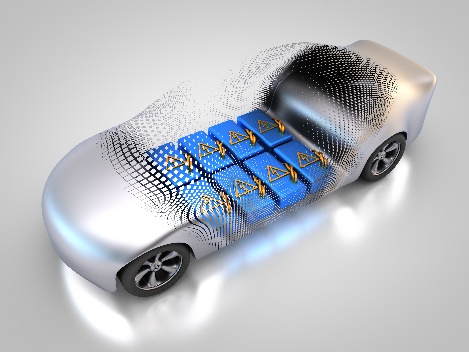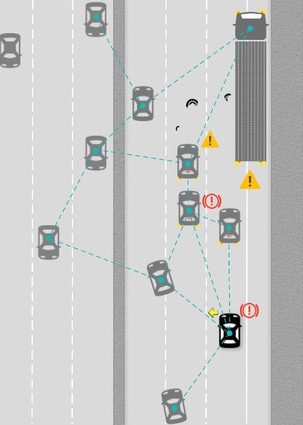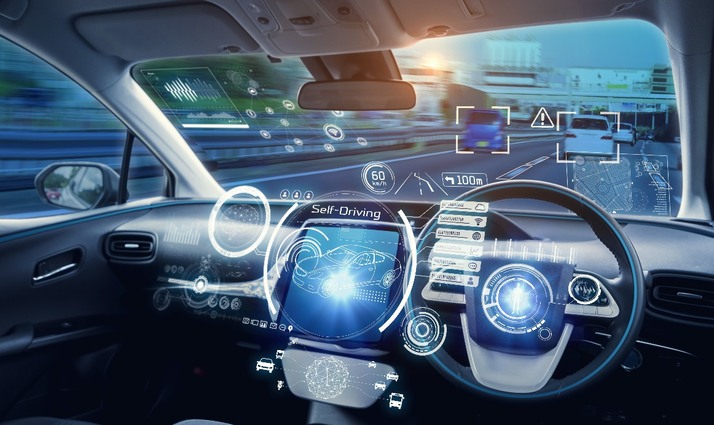
News
Experience the future already now!
To be a part of the automobile revolution and shape the future you must think ahead of time. Learn more about the future technology of automotive.


An environmentally friendly technology – the electromobility
Fine dust and soot particles? In the near future terms like these will no longer be associated with the automotive industry because the electromobility with its renewable energy-based technology is the most important and central building block of a sustainable and climate-friendly transport system.

At this point the engineering is in demand to solve a number of problems and to advance the development. For example, safety-critical software modules/ designs are needed for modern battery management systems which monitor the charging and discharging, the range estimation, the temperature monitoring and the diagnosis of the batteries. The main focus here is on the range optimization, efficiency control and accelerated charging of the batteries. In addition to this are completely new safety concepts, control solutions and drive options, as well as infotainment and driver assistance systems, such as power and battery level indicators or external speakers for generating an artificial engine sound to protect pedestrians.
In particular the theme of functional safety offers interesting and challenging fields of activity. Face the challenge and ensure with an internationally active team that the behavior of electric vehicles can be predicted even in the event of a fault.
Connected by „Car-to-X Communication“
The term Smart Home wins more and more importance in our everyday life. The communication technology behind it makes it possible, for example to operate household appliances from anywhere conveniently via smartphone or tablet.
In the future this control of smart home devices should also be able to take place from the car, for example, controlling the light or heater in the house. The possibilities are endless and you can join us; together we shape the future!

Through the Car-to-X Communication the borders of this data exchange will be completely dissolved. The trends are moving towards fully networked vehicles which are connected and communicate with each other as well as with the surrounding traffic infrastructure via WiFi or mobile network.
Thereby, information about the traffic situation are also passed on to the car, which in turn transmits it to other vehicles. Goal of this communication is to warn drivers of dangerous situations beyond their field of view. Likewise, the sensors of a car may operate in adverse environmental conditions (e.g. snow, fog) and therefore may not capture all information. With the aid of the Car-to-X Communication these data will finally be supplemented.
The automotive industry expects a strong reduction of accidents and thus more safety as well as a better traffic flow from this "sixth sense".

The challenge for software developers is to communicate the increasing amount of information to be processed to protect the driver's personal data in a guaranteed secure and encrypted communication. Moreover, data processing must ensure that data packets reach their intended recipients. For this purpose, known standards such as 802.11p, also called pWLAN, or ITS-5G are used.
Stress-free by automated driving
It is up-to-date that modern cars contain a multitude of assistant systems which support the driver. For example, they keep the vehicle on the right road lane, spy on blind spots or react independently to a dangerous situation by e.g. slowdown the car. Obviously, these assistant systems effect a radical change of the driving experience because the vehicle guidance will gradually be left entirely to the vehicle. As a result, stop and go situations and parking in small parking spaces seem less fearful and consequently ensuring a relaxed driving in stressful times.
Automated and carefree driving becomes possible through the multitude of sensors (e.g. 3D-camerasystems, ultrasonic sensors, infrared systems) which capture and analyze the vehicle environment as well as pass the data on to the driver.

The biggest challenge is to realize an environment object recognition in which each of the sensor systems recognize and provide various object properties. If these objects are then processed by several cars and stationary systems, a dynamic situation arises in which the vehicles can move safely – all in real time! It remains always important to comply with security-relevant and time-critical interactions in the highest degree for a guarantee of maximum safety.
These are the basic requirements for fully automated driving of the future because the resulting benefits are obviously: the accident rate could be lowered and annoying traffic jams could be avoided. Of course, all this result in a transformation of the landscape. For example, parking spaces will yield to new green parks because then the fully automated cars will operate like taxis: inform your vehicle and it will be at the desired place at the desired time, otherwise it will be out of town or at home.
Stop dreaming of creating space for the pretty things in life and ensuring road safety at the same time, but actively shape that future!
The HMI – Human Machine Interface
As we are already in digitization and automation ... For sure you know these digital displays in the car dashboards which are increasingly found in vehicles. For their development the demonstration of the increasing number of information to be processed is a new challenge. The causes therefore are attributed to the openness of the worldwide market and to the customer’s desire for software-based innovations.
This challenge calls for new paths in the software engineering and you have the choice to go them with us together!

Modern infotainment and multimedia systems should ensure that the driver feels at home during the ride. Smartphones and apps need to be integrated safely into the vehicle environment and loaded into the head unit to be always up-to-date about private messages, news or trends.
In the future, this smart device integration should make it possible to easily access the vehicle via a tablet or smartphone, start it or personalize individual functions.
In addition to the presentation of private data, the focus in software engineering is on their regulation because it has to be secured that no stimulus satiation takes place and that the driver is not distracted from the traffic by the control system. Here we come to the HMI, in other words to the user interface:
Despite established voice control, gesture control will increasingly find its way into modern vehicles. Prototypes for this are already in development like for example to accept a call by nodding.
These control mechanisms are made possible by time-of-flight sensors integrated in the cluster, more precisely by 3D-camerasystems with integrated 3D-imagesensor which convert recorded infrared signals in a 3D-image.
Any driver’s gestures could be thereby recorded with millimeter precision and implemented in actions. So, for example applications could be moved or the menu could be navigated by a wiping movement.
The augmented reality head-up displays of the future
The head-up display (HUD) allows the driver to display all important information directly in the field of vision so that he doesn’t have to break the eye contact with the traffic. This important information include speed, traffic alerts and navigation arrows.
Through extensive trend and technology analysis, experts have already identified promising innovations for the cockpit of the year 2025. These include augmented reality (AR) applications which are based on the AR-head-up display technology.

The big difference between a HUD and an AR-HUD is the projection of relevant data. While symbols and hints in a HUD are merely displayed in the field of view, through an AR-HUD the information merge with the environment. So, the reality is “augmented”.
It becomes very interesting if the technology of AR-HUDs and of the Car-to-X Communication would be combined. With this, the driver could be warned even in unmanageable situations of potential dangers outside his field of view and can take preventive measures. Through this combination, the information could even be used to transfer the information of the surrounding vehicles into their own field of view.
